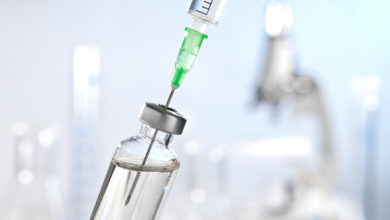Life Saver: Indraprastha Apollo Blood Bank

Dr Mohit Chowdhry, Sr Consultant & Head, Department of Transfusion Medicine, Transplant Immunology & Molecular Biology, Quality Manager- Lab Services,Indraprastha Apollo Hospitals New Delhi, gives an insight into the blood bank of the hospital and how it has been able to grow since its inception
The blood bank at Indraprastha Apollo Hospitals New Delhi has been operational since 1996 with the inception of the hospital. It is touted as the first blood centre in India to implement ID-NAT in 2006 for routine blood donor screening of HIV RNA, hepatitis B virus deoxyribonucleic acid (DNA), and hepatitis C virus ribonucleic acid (RNA); in addition to mandatory routine serology based TTI screening. The blood bank can collect 15000-16000 units which can be gradually increased to 18000-19000.
The blood bank has a transplant immunology department within the Dept of Transfusion medicine, an automation and referral centre for immunohematology, mandatory antibody screening for all patients requiring transfusion, Hepatitis B core antibody test and strict adherence to JCI standards.
Equipment used
ID NAT was implemented at the centre in April 2006 with the centre initially using Procleix Ultrio Assay (Grifols, CA, USA) on the Procleix eSAS System. Subsequently, the ID-NAT system has been upgraded to Procleix Ultrio PlusAssay on the automated Procleix Tigris System in January 2014 and finally to the current Procleix Ultrio Elite Assay on the fully automated, single chamber walkaway Procleix Panther System in November 2017. All the Procleix assays are based on Transcription Mediated Amplification(TMA) technology for blood donor screening of HIV RNA, HCV RNA, and HBV DNA.
Costs involved
The costs of running the blood bank involve multiple factors. It includes costs spent on donor safety, blood collection, blood component preparation, transfusion-transmitted infection testing, immunohematology and other
testing, advanced tests like Nucleic acid test (NAT) and a considerable expense on blood storage and issue. However, these standards and tests are not uniform (except for the mandatory tests) and therefore cost of establishing may differ from one centre to another
Challenges
The utmost challenge faced in running a successful blood bank is to ensure the safest possible blood to the patients.Voluntary donors are the pivot to any safe blood transfusion supply. However, voluntary blood donation is a sorepoint and that too most of the donors are one time donors. The challenge is to have a regular repeat non-remunerated voluntary blood donor which is thecornerstone for the safe blood supply and that is our biggest challenge.
People behind the success
The people involved in the successful running of our blood bank are Dr RN Makroo who established this blood
bank way back in 1995. Since then, the quality standards have been state of art. Every colleague who has worked in this blood centre has helped to improve the standards of this blood centre. The management of my hospital has always been very supportive and has ensured that we are provided with all the resources and the manpower needed to run a successful transfusion medicine programme. Last but not the least, I would like to thank the blood donors, without whom there would be no blood, which is a prime requirement to run the blood
centre.




